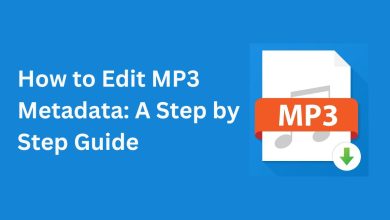
In the world of digital document sharing, the debate between using PDF and Word files often comes down to personal preference, convenience, and functionality. Both formats have unique advantages, yet the PDF format is often considered the superior option for sharing documents securely and professionally. In this blog post, we’ll dive deep into the features of PDF and Word documents, analyze why PDFs are generally preferred for sharing, and outline best practices for using PDFs in professional and personal contexts.
What Are PDF and Word Document Formats?
Before diving into why PDFs are often the preferred format for sharing, let’s clarify what these formats are and what makes them unique.
- PDF (Portable Document Format): Developed by Adobe, the PDF format preserves document formatting and is widely compatible across various devices and operating systems. PDFs are often used for official documents, contracts, eBooks, and more.
- Word Document (DOC or DOCX): A proprietary file format developed by Microsoft for its Word software. Word documents are highly customizable and commonly used for drafting, editing, and formatting text-based documents.
Key Differences Between PDF and Word
Here’s a closer look at the differences between PDF and Word formats:
- Compatibility and Accessibility
- PDFs are universally accessible and maintain their formatting across different devices, operating systems, and software versions. This makes PDFs ideal for sharing documents with people who may use different systems.
- Word documents can experience formatting inconsistencies, especially when shared between different versions of Microsoft Word or opened with alternative software.
- Document Security
- PDFs allow users to apply various security features, including password protection, encryption, and permissions restrictions. This makes PDFs a more secure choice for sharing confidential information.
- Word documents offer limited security options compared to PDFs and are generally easier to alter without tracking changes.
- Editability
- Word documents are designed to be easily edited, making them suitable for collaborative drafting and content creation.
- PDFs, on the other hand, are not as easy to edit without specialized software. This preserves document integrity, which is ideal for finalized documents.
- File Size and Compression
- PDFs can be compressed without losing quality, making them convenient for sharing high-quality documents in smaller file sizes.
- Word documents are usually larger and may lose formatting when compressed, especially when containing images, charts, or complex layouts.
- Appearance and Layout
- PDFs maintain a consistent layout and appearance, regardless of the device used to view them.
- Word documents may appear differently based on software and system settings, which can affect readability and professionalism.
Why PDF is the Superior Format for Document Sharing
1. Consistent Formatting and Professional Appearance
One of the biggest advantages of PDF files is their ability to maintain consistent formatting. PDFs lock in the document’s layout, fonts, colors, and images, ensuring that it looks exactly as intended across all devices and platforms. For professionals who rely on visual consistency to communicate their brand or message, this feature is essential. PDFs also offer a polished and professional look, making them the ideal choice for contracts, proposals, presentations, and marketing materials.
2. Enhanced Security Features
When sharing sensitive information, security is a top priority. PDFs come equipped with robust security features, such as:
- Password Protection: PDFs can be password-protected, allowing only authorized individuals to open and view the document.
- Encryption: PDF files support encryption, which protects the data within the file from unauthorized access.
- Permissions: PDFs offer permission settings that restrict copying, printing, or editing, providing an added layer of control over shared content.
For businesses, these features are invaluable for maintaining the confidentiality of contracts, financial reports, and other sensitive materials.
3. Compact File Size for Efficient Sharing
File size can be an issue when sharing documents via email or uploading them to online platforms. PDF files are known for their ability to compress large files without sacrificing quality. This is particularly beneficial when sharing documents with high-resolution images, graphics, or large amounts of data, as PDFs can reduce the file size while keeping the content clear and accessible.
4. Cross-Platform Compatibility
One of the main reasons PDFs are preferred for document sharing is their universal compatibility. Whether viewed on a Mac, Windows PC, tablet, or smartphone, a PDF file will retain its format and appearance. This makes PDF ideal for sharing with colleagues, clients, or partners who may be using different devices. In contrast, Word documents may require the recipient to have compatible software to view the file as intended.
5. Easy Viewing on Mobile Devices
PDFs are optimized for mobile viewing, making them user-friendly for individuals accessing documents on the go. With the rise of remote work and mobile-first design, being able to view a document on a smartphone or tablet is essential. Many mobile apps and browsers come with built-in PDF readers, ensuring that recipients can open and read PDFs without additional software.
6. High-Quality Printing
PDFs are formatted to ensure that printed documents look exactly as they do on screen, maintaining high-quality output. This is particularly important for marketing materials, official documents, and presentations where visual consistency is essential. Unlike Word documents, which can sometimes print differently based on the printer settings or software version, PDFs provide reliable, consistent print quality.
7. Efficient Archiving and Long-Term Storage
PDFs are also a better choice for archiving and long-term storage. Due to their non-editable nature and stable formatting, PDFs are ideal for maintaining official records that need to remain unchanged over time. They’re also widely accepted by government agencies, businesses, and educational institutions as a standard format for record-keeping.
8. Integration with E-Signatures and Form Fields
Modern business relies heavily on digital signatures and interactive forms. PDFs support e-signatures and fillable form fields, allowing users to complete forms and sign contracts directly within the document. This streamlines workflows for businesses, reducing the need to print, sign, and scan documents.
9. Accessibility Features
PDFs are designed to be accessible to all users, including those who rely on screen readers. The format supports alternative text for images and other accessibility features, making it easier to create documents that comply with accessibility standards like the ADA (Americans with Disabilities Act). Word documents can be made accessible, but the PDF format provides more robust options for inclusive document sharing.
Best Practices for Sharing PDFs
To maximize the benefits of sharing PDFs, follow these best practices:
- Optimize File Size: Use PDF compression tools to reduce the file size without compromising quality, especially if the document contains images or complex layouts.
- Enable Password Protection: For sensitive documents, add a password to prevent unauthorized access.
- Add Metadata: Include metadata (title, author, keywords) in your PDF for better searchability and document organization.
- Use Fillable Forms When Needed: If your document requires input from recipients, create fillable form fields to streamline the process.
- Test on Multiple Devices: Before sharing, test the PDF on different devices to ensure the layout and content are displayed correctly.
- Choose the Right Compression Settings for Print vs. Web: If your document will be printed, use high-quality compression settings. For online sharing, lower-resolution settings can reduce file size for faster loading.
Situations Where Word Documents May Be Better
While PDFs are superior in many aspects of document sharing, there are situations where Word documents may still be more practical:
- Collaborative Editing: When multiple people need to make edits, Word documents allow for easy collaboration, especially when using cloud-based platforms like Google Docs or Microsoft OneDrive.
- Drafting and Revision Processes: If the document is still a work in progress, Word files offer flexibility for making changes without converting back and forth.
- Internal Communications: For internal documents that don’t require a polished look, Word files may be more convenient for fast editing and revisions.
Conclusion
While both PDF and Word have their respective strengths, PDFs are the superior choice for sharing documents due to their universal compatibility, consistent formatting, security features, and mobile-friendly design. PDFs offer a polished, professional appearance, making them ideal for sharing finalized documents, contracts, and presentations. Additionally, PDFs are highly versatile, supporting e-signatures, fillable forms, and accessibility features, which are essential in today’s digital-first business environment.
For any organization or individual looking to maintain a professional, secure, and user-friendly approach to document sharing, PDFs are the way to go. By adopting PDFs as your primary document-sharing format, you can enhance your communication, streamline your workflow, and ensure that your content is viewed exactly as you intended.




